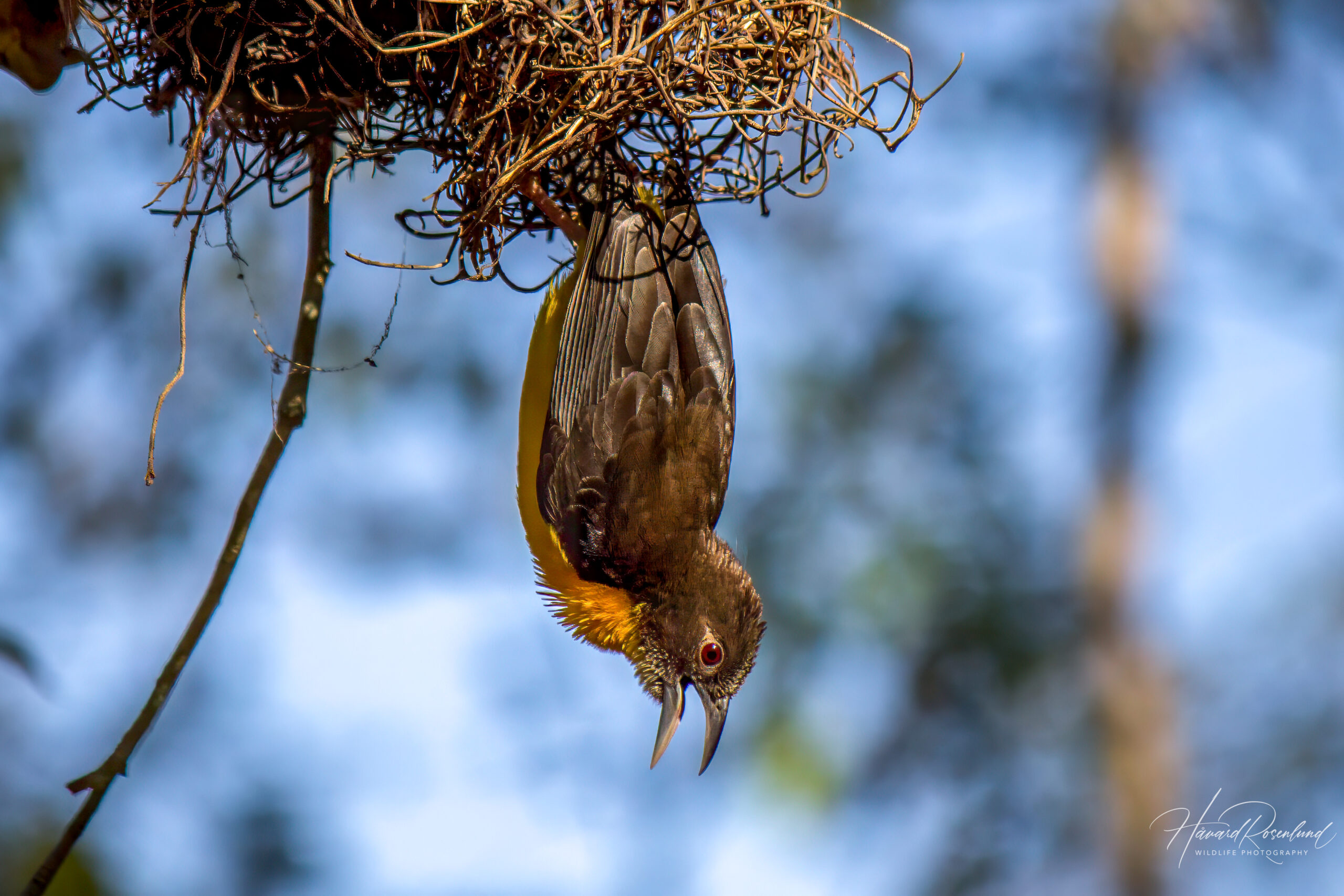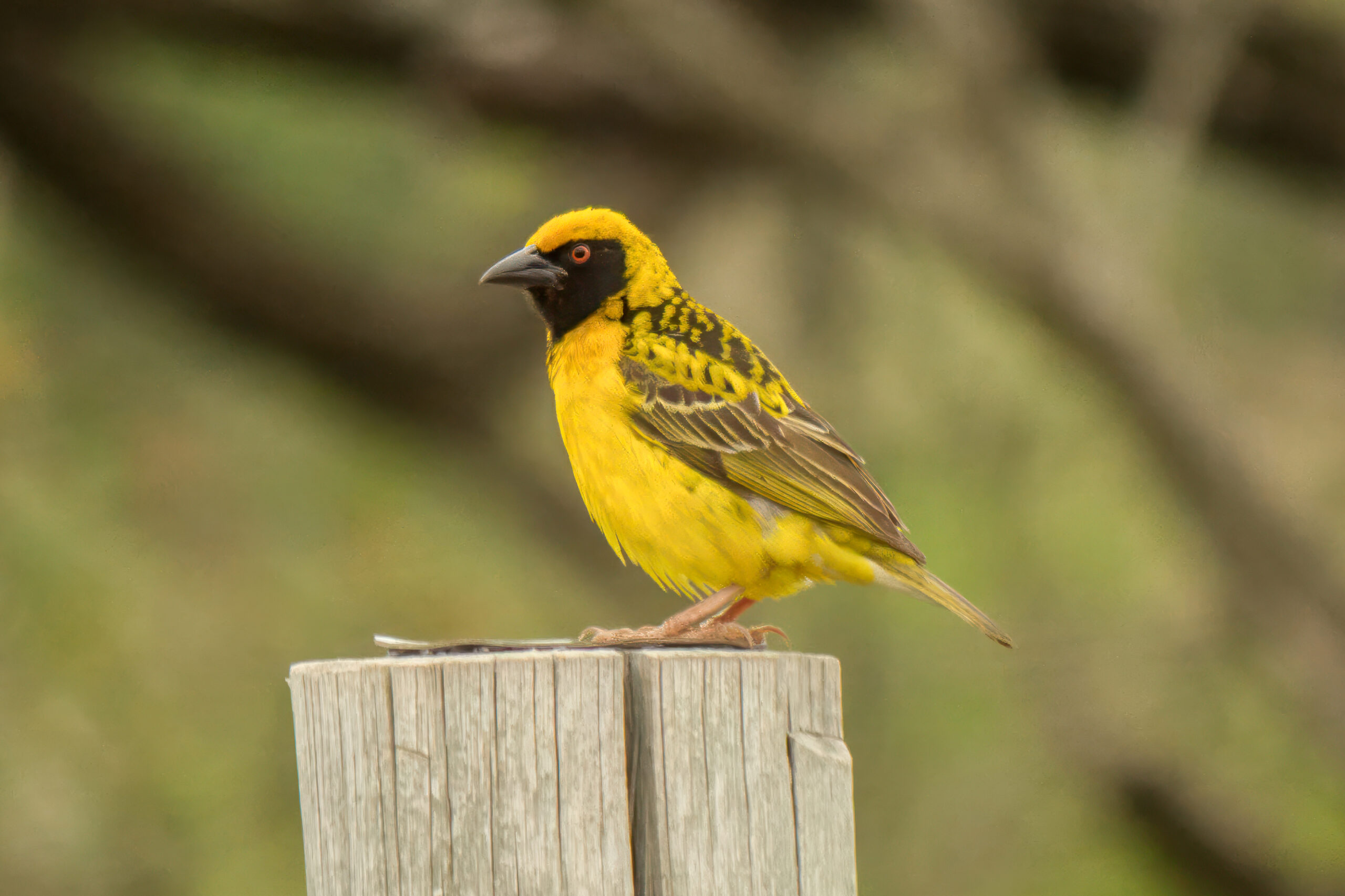Description
The dark-backed weaver (Ploceus bicolor), also known as the forest weaver, is a species of weaver primarily found in forests of sub-Saharan Africa. This weaver exhibits a moderate size, typically measuring around 15-17 cm (5.9-6.7 in) in length. It is known for its striking plumage, characterized by a dark, almost black back contrasting sharply with its bright yellow underparts. This plumage separates it from other weaver species. Males and females have similar coloration, which also distinguishes them from other weaver species that often show sexual dimorphism.
Diet & habitat
Dark-backed weavers are predominantly found in moist forested areas, including montane and lowland forests. They are adaptable and can also inhabit plantations and gardens. Their diet mainly consists of insects, which they skillfully forage for in the forest canopy. They employ a methodical approach to feeding, often hanging upside down on branches to access food sources. Their diet is occasionally supplemented with fruit, playing a small part in seed dispersal. Dark-backed weavers also exhibit a unique behavior known as “anting”, where they allow ants to crawl on their bodies. This is thought to help control parasites.
Nesting
The breeding season of the dark-backed weaver varies geographically, but it generally coincides with the onset of the rainy season. These birds are known for their elaborate nesting behaviors, with males typically constructing the intricate nests. These nests are often spherical with a side entrance, made from woven grass and suspended from tree branches. Females select a mate based on the quality of the nest and the male’s display. Males are polygynous and may mate with multiple females during a breeding season, each of which will occupy a different nest constructed by the male. The incubation period lasts about 14 days, and fledglings leave the nest approximately 17-21 days after hatching.
Status
The dark-backed weaver is widespread and common and has a stable population trend. However, like many forest species, they could be susceptible to habitat loss and degradation. It is listed as least concern on the IUCN Red List.







